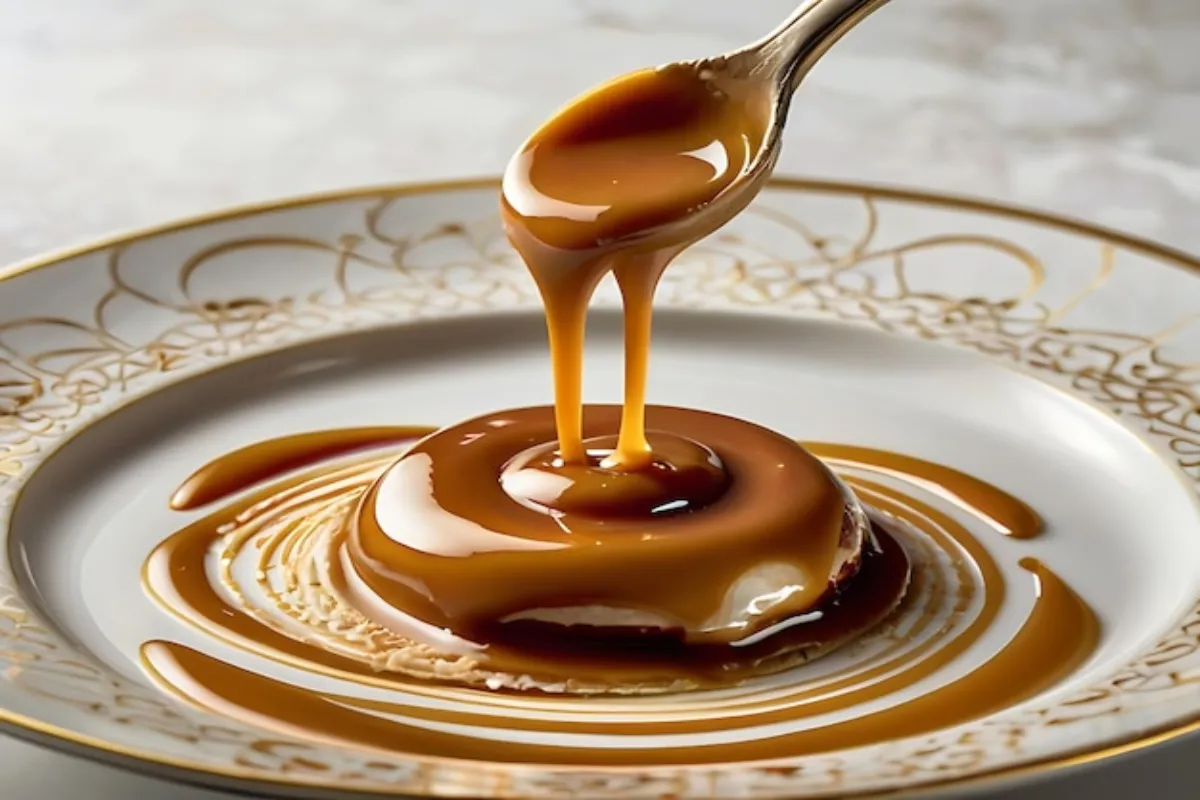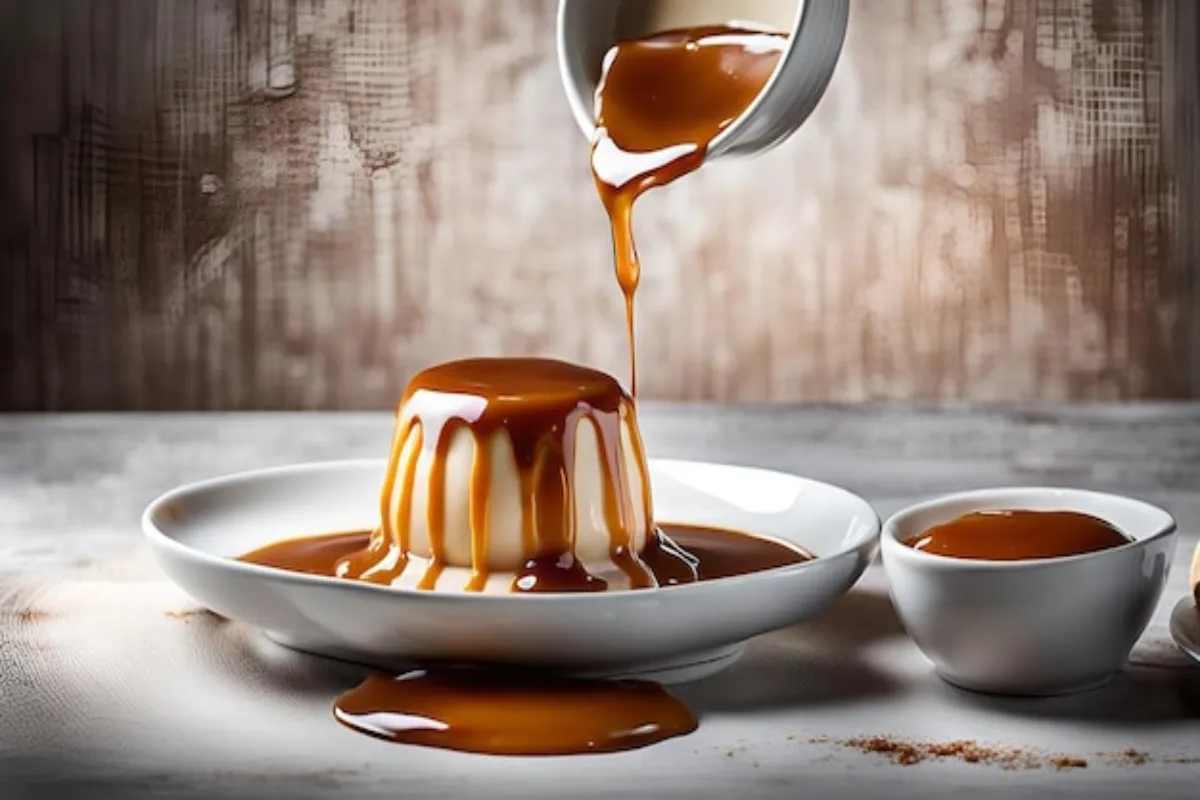The debate between salted caramel and dulce de leche often perplexes dessert lovers. While both are cherished for their rich, sweet flavors, many people mistakenly believe they are the same. However, despite their similarities, these two confections differ in ingredients, preparation methods, and cultural significance. This article will explore the question: Is salted caramel the same as dulce de leche? By the end, you’ll understand the key differences and how to use each in your favorite recipes.
What is salted caramel?
Salted caramel offers a balanced combination of caramelized sugar, butter, cream, and salt. This mix results in a flavor profile that hits all the right notes: sweet, rich, and slightly salty. The salt enhances the overall taste by cutting through the sweetness, creating a more complex flavor.
Making salted caramel involves heating sugar until it melts and turns amber. Once it reaches the perfect caramelization point, you add butter and cream, followed by a sprinkle of salt. The outcome is a smooth, rich sauce or candy that complements various desserts, from ice cream to brownies. In recent years, salted caramel has become a staple flavor in gourmet and everyday treats.
If you’re curious about the science behind caramelization, check out the Science behind caramelization and the Maillard reaction to learn how sugar transforms during cooking.
What Is Dulce de Leche?
On the other hand, dulce de leche is a sweetened milk-based confection that originates from Latin America. The name literally means “sweet milk,” and traditional recipes involve simmering milk and sugar over low heat for several hours. The slow cooking process thickens the mixture into a caramel-like spread, but its flavor resembles butterscotch or toffee more than traditional caramel. Its nutty flavor comes from the Maillard reaction, a chemical process between sugars and proteins during cooking.
Unlike salted caramel, which focuses on caramelized sugar, dulce de leche derives its characteristic flavor from the slow reduction of milk and sugar. This method results in a flavor profile distinct from salted caramel.
You can follow an authentic dulce de leche recipe at home with this traditional dulce de leche recipe, which provides a step-by-step guide.
Key Differences Between Salted Caramel and Dulce de Leche
Despite their caramel-like characteristics, salted caramel and dulce de leche differ in several key ways:
- Ingredients:
- Salted caramel consists of sugar, butter, cream, and salt.
- Dulce de leche uses milk and sugar, often simmered for hours.
- Preparation:
- Salted caramel involves caramelizing sugar and adding dairy.
- Dulce de leche depends on the Maillard reaction for its flavor.
- Flavor Profile:
- Salted caramel features sweetness balanced by salt and sometimes a slight bitterness from caramelization.
- Dulce de leche offers a creamy, rich, and nutty flavor.
- Texture:
- Salted caramel is smoother and more fluid, often used as a sauce or in candies.
- Dulce de leche is thicker and more spreadable, similar to a jam.
Geographical Preferences and Cultural Significance
Both confections have unique cultural significance. French cuisine, where chefs traditionally used salted butter, first introduced salted caramel. Over the years, salted caramel has gained popularity worldwide, particularly in North America and Europe. People use it in various desserts, chocolates, and coffee drinks.
In contrast, dulce de leche holds deep cultural roots in South America. Countries like Argentina, Uruguay, and Chile include dulce de leche in numerous desserts, including alfajores, churros, and cakes. It’s a beloved treat often enjoyed as a spread on bread or crackers or as a filling in pastries.
Flavor Profiles and Taste Comparison
Comparing the flavor profiles of salted caramel and dulce de leche reveals stark differences:
- Salted Caramel: The addition of salt creates a unique contrast between sweet and savory. The caramelized sugar introduces a slight bitterness, while butter and cream add richness. This complexity makes it a favorite for gourmet desserts. You can learn more about the science behind caramelization in this Science behind caramelization and the Maillard reaction.
- Dulce de Leche: Dulce de leche delivers a milder flavor, with creamy notes of milk and a soft sweetness. Its flavor develops through the Maillard reaction, resulting in a truffle-like taste. Overall, it’s sweeter and less complex than salted caramel. If you’re interested in trying it, follow this traditional dulce de leche recipe.
Texture and Appearance
The texture of salted caramel is typically smooth and fluid, particularly when used as a sauce. People often drizzle it over desserts or use it in candies such as caramel chocolates.
On the other hand, dulce de leche has a thicker, more spreadable texture similar to a dense jam. This consistency makes it ideal for sandwiching between cookies (alfajores) or filling cakes and pastries. In terms of color, both confections have a golden-brown hue, although dulce de leche tends to be lighter due to the milk content. For a broader understanding of caramel, check out the history of caramel and its global influence.
Popular Uses of Salted Caramel
Salted caramel enjoys immense versatility in modern cuisine. Here are some of the most common uses:
- As a topping for ice cream or brownies.
- Drizzled over cheesecake or pancakes.
- Incorporated into chocolates or macarons.
- Added to coffee or hot chocolate for a sweet-savory twist.
- Swirled into cakes and frostings.
Popular Uses of Dulce de Leche

Though dulce de leche may not be as globally renowned as salted caramel, its versatility makes it equally beloved in Latin America. Here are some popular ways to enjoy dulce de leche:
- As a filling for alfajores, the classic Latin American sandwich cookie.
- Spread over toast, croissants, or pancakes.
- Used in cakes and pastries, such as tres leches cake or churros.
- Swirled into ice cream or used as a yogurt topping.
- Mixed into fudge or caramel squares.
Health Considerations: Salted Caramel vs. Dulce de Leche
When considering health, both salted caramel and dulce de leche are indulgent and should be consumed in moderation. However, their nutritional contents vary:
- Salted Caramel: With butter, cream, and sugar as primary ingredients, salted caramel contains high amounts of fat and sugar. The salt also increases the sodium content, which may concern those watching their salt intake.
- Dulce de Leche: Though dulce de leche is also high in sugar, it contains milk, providing some protein and calcium. Nonetheless, it remains calorie-dense, so it’s important to enjoy it sparingly.
Is There a Vegan or Dairy-Free Version of Each?
For those following vegan or dairy-free diets, it’s possible to create alternatives for both salted caramel and dulce de leche:
- Vegan Salted Caramel: By using coconut cream and vegan butter, you can craft a dairy-free version of salted caramel. The result remains creamy and delicious, with a slight coconut flavor.
- Vegan Dulce de Leche: You can replace cow’s milk with coconut milk or almond milk to make a dairy-free version of dulce de leche. Although the flavor slightly changes, the outcome still produces a thick, sweet spread.
Can You Substitute One for the Other?
Although salted caramel and dulce de leche share certain similarities, they are not always interchangeable. Here’s when substitution might work and when it might not:
- You can substitute dulce de leche for salted caramel in some sauces or drizzles, but the flavor will be creamier and milder.
- In recipes that rely on the saltiness or bitterness of salted caramel, such as certain cakes or chocolates, dulce de leche may not deliver the same depth of flavor.
- Use dulce de leche in recipes that require a thick, spreadable consistency, like cookies or pastries.
Frequently Asked Questions (FAQs)
Is dulce de leche sweeter than caramel?
Yes, dulce de leche tends to be sweeter and creamier than salted caramel. The milk used in its preparation gives it a rich, sweet taste, while salted caramel typically has a more balanced flavor, thanks to the salt.
Can You Use Salted Caramel Instead of Dulce de Leche in Recipes?
In some cases, you can replace dulce de leche with salted caramel, but it depends on the recipe. In desserts where the saltiness of caramel is essential, dulce de leche may not provide the desired effect due to its creamier, sweeter taste.
What Is Healthier: Dulce de Leche or Caramel?
Neither dulce de leche nor salted caramel qualify as healthy foods, but both can be enjoyed in moderation. Salted caramel typically has a higher fat content due to the butter and cream, while dulce de leche contains milk, which adds protein and calcium.
What Is the Difference Between Caramel and Dulce de Leche Sauce?
Caramel sauce uses sugar, butter, and cream, while dulce de leche sauce involves milk and sugar. The flavor and texture differ, with caramel sauce being richer and more fluid and dulce de leche sauce offering a creamier and thicker consistency.
Does Dulce de Leche Taste Like Butterscotch?
Dulce de leche has a flavor similar to butterscotch, thanks to the Maillard reaction that gives it a toffee-like taste. However, it is milkier and less intense than traditional butterscotch.
Conclusion
To sum up, while salted caramel and dulce de leche may appear similar, they are fundamentally different in terms of ingredients, preparation, and taste. Salted caramel involves caramelizing sugar and balancing it with salt, while dulce de leche develops through the slow reduction of milk and sugar. Each has its own distinct uses in desserts, and whether you prefer the complex flavors of salted caramel or the sweet richness of dulce de leche, both deserve a place in the world of sweets.
